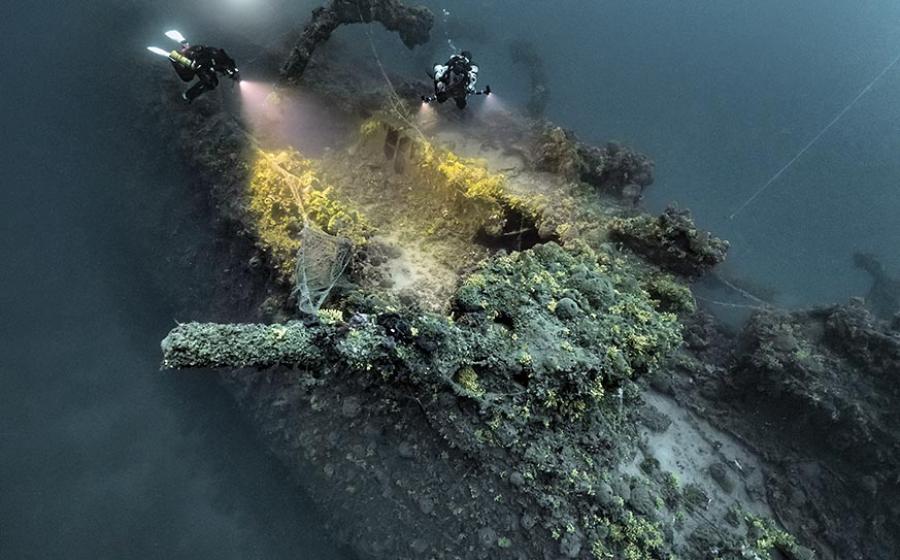How to Make the Most of Your Next Liveaboard Trip

Annie CrawleyLiveaboards take you to remote destinations like coral capital Raja Ampat, Indonesia.
I’ve filled nearly every position, from captain to cook, dive instructor to photo/video pro, deckhand to hostess.
Crews work together as a team, and their most important job is to give you, the passenger, the safest, most excellent underwater adventure of your life. Whether you plan to dive every dive or would prefer a hammock and a massage, the aim is to please you. If we’ve done our job, you’ll never want to leave.
With the right equipment, training and expectations, liveaboard diving can be the greatest adventure of your life. Just think, the farthest you walk to go diving is the length of the vessel, from your cabin to the dive deck! These tips will help make your trip successful.
Prepare Before You Go
Get your gear serviced and use it on a local dive or in a pool. Practice using your surface marker buoy. Bring your logbook. Get yourself weighted for your current equipment, especially if you are using a new wetsuit or if your body composition has changed since your last trip (even if you hate to admit it). Pack a spare-parts kit including an extra mouthpiece, mask, fin strap, batteries and essential charging cords. Collect your manuals and make sure you have downloaded PDFs for your dive computer, cameras and any other technical gear. If you are using a new camera or accessory, practice with it both on land and in water before your trip.
If you do not have a dive computer, invest in one. After you purchase your computer from the experts at your local dive store, learn it and discuss features. There are dozens of dive computers on the market, and you can’t expect a crewmember to teach you on the boat unless you are renting the computer from the vessel. Some computers have a deep safety stop for one minute at 40 feet that you can turn on or off. If you blow a deep-water safety stop, your computer locks you out for 24 hours. Become familiar with this essential piece of your kit. Many experienced divers carry two computers on every dive. Most liveaboards offer nitrox (enriched air). Learn to use it, and how to set your computer for the blend on board.
Packing Pro Tip: Many of the top liveaboard destinations are in remote locations. Whatever you pack in, pack out. Do not leave behind batteries, plastic and other waste. When choosing sunscreen, hair products and travel soap, always pack reef-safe products, as what we use drains into the sea. Be ocean-health conscious with all your personal products as well as your diving style.
Educate Yourself
Research the highlights of your destination. Many liveaboards cater to all levels of divers from beginner to experienced. Take an advanced class before you head out, or find out if an instructor on board can teach you. Taking specialty courses before your trip or throughout gives you additional experience with dive professionals. I recommend Boat Diver, Underwater Naturalist, Drift Diver, Fish Identification and Night Diving. Divers Alert Network’s prepared diver course is also worthwhile. Many dive operators create unique specialties as well. Drift-diving specialty courses make liveaboard diving more fun while making you a safer diver.
Be a responsible diver. If you are a novice, identify yourself to the dive crew. Stay with the divemasters on your dives to learn from them. Know there may be dives offered for the advanced diver. You can choose to sit out any dive. The more you learn about our underwater world, the more fun you will have exploring.
Dive Passenger Etiquette
Pay attention to the captain’s safety briefing. There are not many rules for passengers, but knowing what to do in case of an emergency is essential. Know where the emergency exits are, as well as charging stations. Follow the rules of the vessel.

Annie CrawleyStick close to your dive guide to find out where pygmy seahorses hide on the reef.
Be on time and ready for every dive briefing. Dives are planned around many schedules, including meal times, currents, tides and travel times. Vessels often travel between dive sites and overnight. Some of us take longer to analyze our nitrox, get into wetsuits, care for our cameras or reconfigure weights and equipment. If you are that person, or in a group with that person, be courteous of everyone else aboard and be on time. The chef plans meals around diving; if the diving is delayed, meals are impacted. You never want an angry chef!
Make safety stops on every dive. Often you may end your dive drifting in blue water; you will need to deploy your surface marker buoy from depth so the dive tender can follow you during your safety stop. Let your dive crew know if you need help mastering this skill.
Go with the flow. A crew cannot control the weather, tides or local law. Itineraries may be subject to last-minute changes. Expect the unexpected, and have a positive attitude if last-minute changes happen. Remember: Your crew wants you to have the best experience—it’s great when passengers carry the same intention. Your attitude, good or bad, will rub off on others.
Share Personal Information with the Crew
You are always asked for dietary requests or allergies in advance. Let the crew know whether your allergies are life-threatening. If you carry an EpiPen or other specialty medications, be transparent about your needs with the crew and where you store those items. Pack a first-aid kit including ear drops, antihistamine, triple antibiotic ointment and ibuprofen.
Let’s Go
I’ve made friends for life on all of the vessels I’ve ever worked, played or dived aboard. Just writing about liveaboard diving makes me want to be on a boat right now—I hope you can start planning your next liveaboard holiday today!










